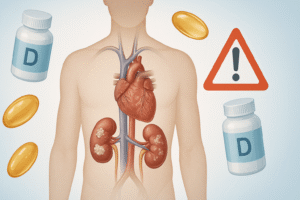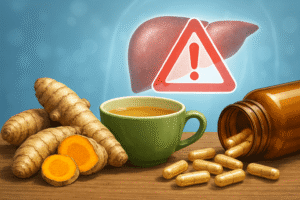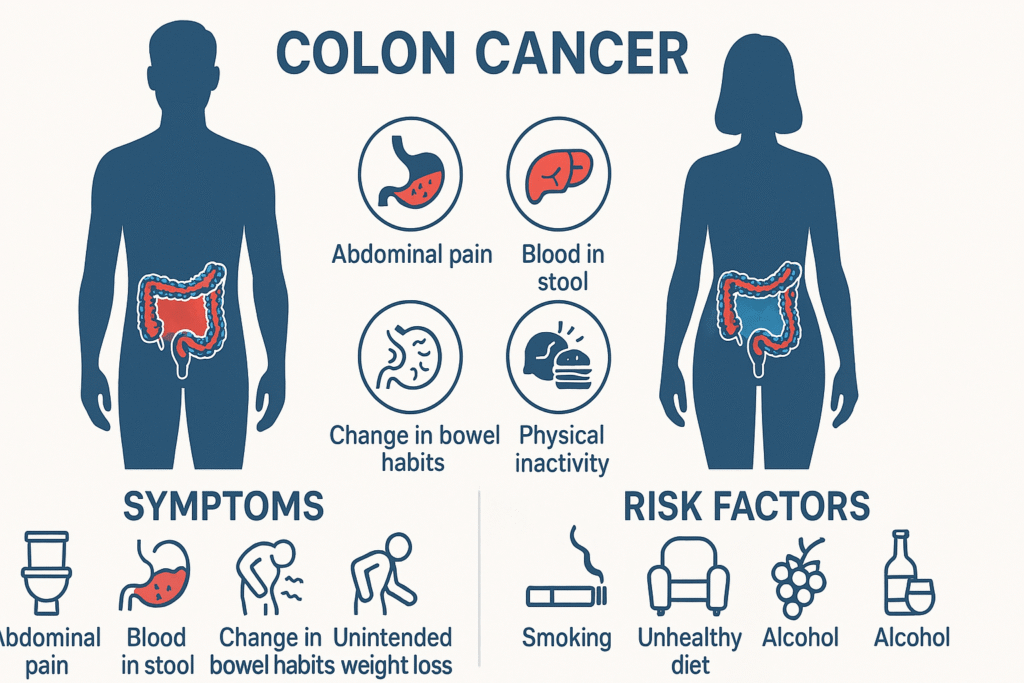
colon cancer symptoms and risk factors in men and women illustration
Discover how colon cancer symptoms and risk factors differ between men and women, and why understanding these differences can save lives.
Colon Cancer Symptoms and Risk Factors in Men and Women
Colon cancer, also called colorectal cancer, is a serious health concern that affects both men and women. Traditionally considered a disease of older adults, it is now increasingly being diagnosed in people under 50. Understanding the colon cancer symptoms and risk factors in men and women is essential for timely detection, prevention, and treatment.
This article explores the similarities and differences between the sexes — from tumor locations to hormonal influences — while also sharing prevention tips backed by science.
What is Colon Cancer?
Colon cancer develops in the colon or rectum, which are parts of the large intestine. Most cases start as polyps, small non-cancerous growths that can turn cancerous over time.
According to the American Cancer Society, colon cancer is the second leading cause of cancer-related deaths in the United States. Worldwide, millions are affected every year, with obesity, unhealthy diets, and alcohol consumption contributing to the rising numbers, especially among younger adults.
If detected early, colon cancer is one of the most treatable cancers. That’s why awareness and early screening are critical.
Colon Cancer Symptoms in Men and Women
While many symptoms are shared between men and women, there are subtle differences in timing and detection.
Common Warning Signs
- Blood in stool (bright red or dark)
- Persistent diarrhea or constipation
- Unexplained fatigue or weakness
- Abdominal discomfort, bloating, or cramps
- Unexplained weight loss
- Iron-deficiency anemia
These symptoms may appear gradually, which can delay diagnosis.
Symptom Onset Differences
Research shows that women often develop noticeable symptoms about 10 years later than men. In many cases, these signs are misattributed to aging, menopause, or other health issues. This delay can lead to later-stage diagnoses in women.
Younger men may notice symptoms earlier, but lifestyle habits like ignoring warning signs or delaying medical visits can still impact timely diagnosis.
Colon Cancer Risk: Men vs Women
Statistical data shows significant differences between the sexes:
- Men: Lifetime risk is about 1 in 24 in the U.S.
- Women: Lifetime risk is about 1 in 26 in the U.S.
Historically, men have a 38% higher incidence rate than women, and their overall risk is up to 50% higher. The reasons are complex, involving both lifestyle habits and biological factors.
Tumor Location and Its Impact
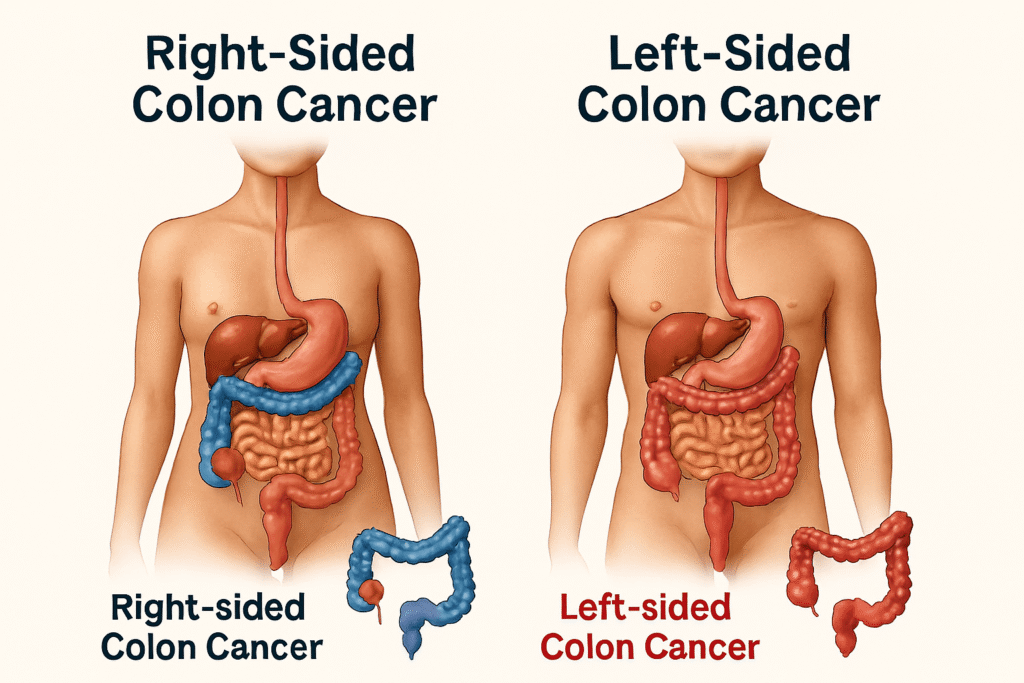
One of the most important differences in colon cancer symptoms and risk factors in men and women lies in tumor location.
Right-Sided Tumors in Women
- More common in women, especially older women.
- Located in the proximal colon (right side).
- Often flat and harder to detect during colonoscopy.
- Associated with more aggressive cancer subtypes like microsatellite instability (MSI) and CpG island methylation (CIMP).
- Frequently diagnosed at later stages, leading to poorer outcomes.
Left-Sided Tumors in Men
- More common in men.
- Located in the distal colon (left side).
- Tend to form polyps that are easier to detect during screening.
- Usually diagnosed earlier, which improves treatment success rates.
National Cancer Institute research highlights that tumor location directly influences treatment strategies and survival rates.
Hormonal and Biological Influences
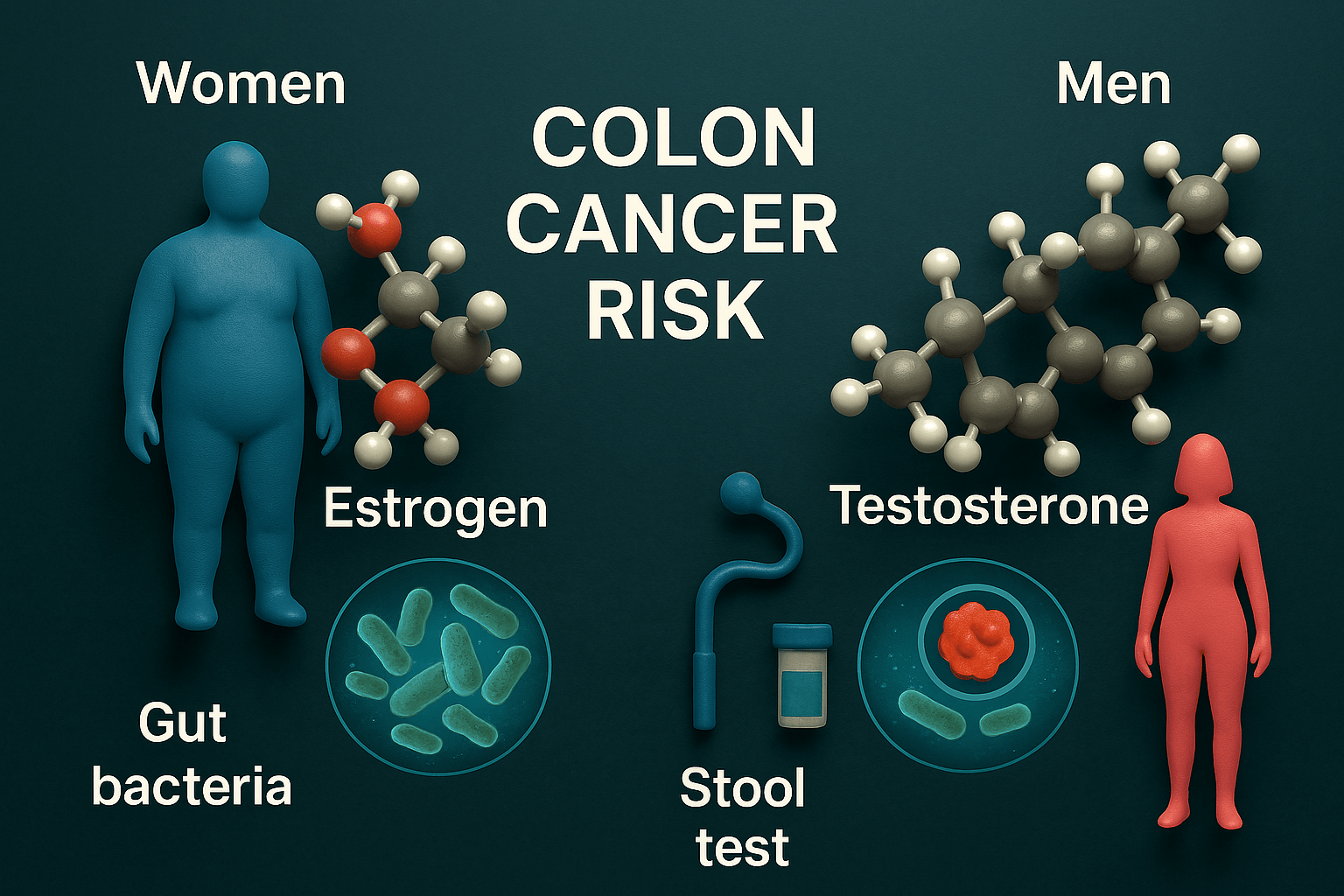
Hormones play a major role in colon cancer risk and progression.
- Estrogen’s Protective Role: Before menopause, estrogen appears to lower colon cancer risk in women and may improve survival rates. After menopause, this protection declines, increasing susceptibility to aggressive tumor types.
- Genetic Differences: Women benefit from protective traits linked to the X chromosome, while men lack backup copies for some tumor-suppressor genes.
- The Microgenderome: This emerging field studies how sex hormones interact with the gut microbiome. Estrogen tends to promote beneficial gut bacteria, whereas testosterone may encourage harmful strains, potentially influencing cancer risk.
For more on hormonal effects, see this Frontiers in Oncology article.
Lifestyle-Linked Risk Factors
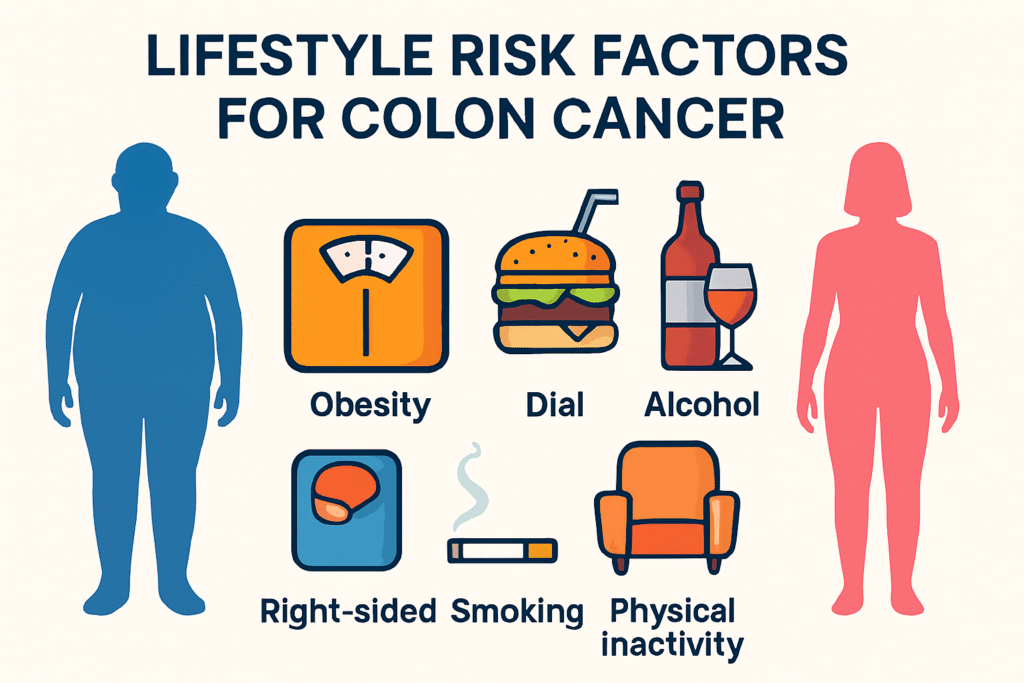
Lifestyle choices strongly influence colon cancer symptoms and risk factors in men and women, but the effects vary.
Obesity
- Stronger risk association in men.
- Early-life obesity poses a higher risk for women.
Diabetes
- Increases colon cancer risk for both sexes.
Diet
- High consumption of red or processed meat raises risk in both men and women.
- Men are more likely to consume these foods in higher amounts.
- Low fiber and low calcium diets are linked to increased risk.
Alcohol and Smoking
- Heavy drinking and smoking are more common among men, increasing their exposure to carcinogens.
The World Cancer Research Fund emphasizes that diet, exercise, and avoiding tobacco are key in prevention.
Early-Onset Colon Cancer: A Growing Problem
One alarming trend is the sharp rise in cases among people under 50. This has led to updated screening guidelines. The U.S. Preventive Services Task Force now recommends starting regular screening at age 45 instead of 50.
From 2019 to 2023, screening rates among those aged 45–49 rose by 62%.
However, younger women under 50 now have an 82% higher incidence rate than men in the same age group. Poor diet, obesity, alcohol use, and sedentary lifestyles contribute to these rising numbers.
Screening Strategies: Tailoring by Sex
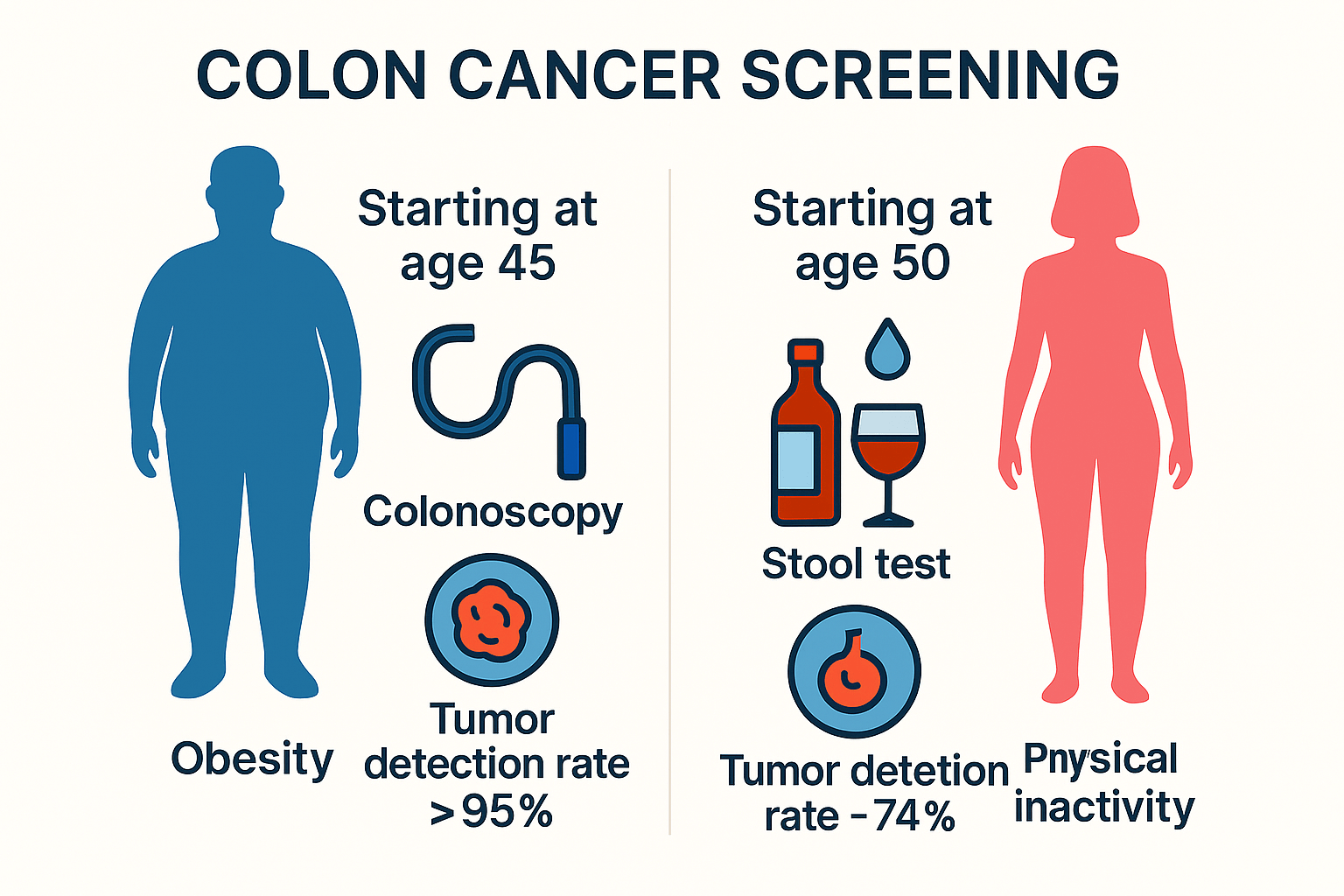
A “one-size-fits-all” approach to screening may miss critical differences:
- For Women: Because right-sided tumors are harder to detect, colonoscopies should be thorough, and patients should be educated about subtle symptoms.
- For Men: Efforts should focus on reducing modifiable risks like diet, alcohol, and smoking, alongside early screening.
Prevention Tips for Everyone
To reduce your risk:
- Eat a diet rich in vegetables, fruits, and whole grains.
- Limit red and processed meats.
- Stay physically active.
- Maintain a healthy weight.
- Avoid smoking and limit alcohol.
- Start screening at age 45 or earlier if you have a family history.
- Stay alert to symptoms and seek medical advice promptly.
For more prevention guidance, visit the Centers for Disease Control and Prevention.
Final Thoughts
While colon cancer symptoms are similar for men and women, differences in tumor location, hormonal influences, lifestyle factors, and genetic traits mean prevention and detection strategies must be gender-aware.
Men face a higher overall risk, but women — especially post-menopausal women — are more likely to have aggressive right-sided tumors that are harder to detect.
Recognizing these differences and acting early through healthy habits and regular screening can save lives. By understanding the colon cancer symptoms and risk factors in men and women, we can improve prevention, ensure earlier detection, and achieve better treatment outcomes for all.
Medical Disclaimer
This article is intended for informational and educational purposes only. It is not a substitute for professional medical advice, diagnosis, or treatment. Always consult a qualified healthcare provider with any questions you may have regarding a medical condition or before making changes to your diet, lifestyle, or healthcare plan. Never disregard professional medical advice or delay seeking it because of something you have read here.
Call to Action
Your health is in your hands, and early action can save lives. Stay informed about the colon cancer symptoms and risk factors in men and women, schedule regular screenings, and encourage your loved ones to do the same. Share this article to raise awareness, and let’s work together to fight colon cancer through prevention, early detection, and healthy living.




